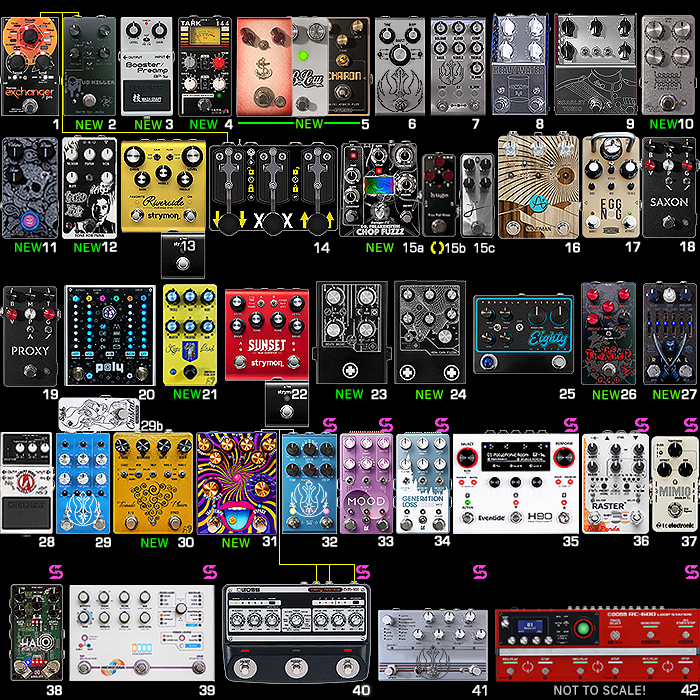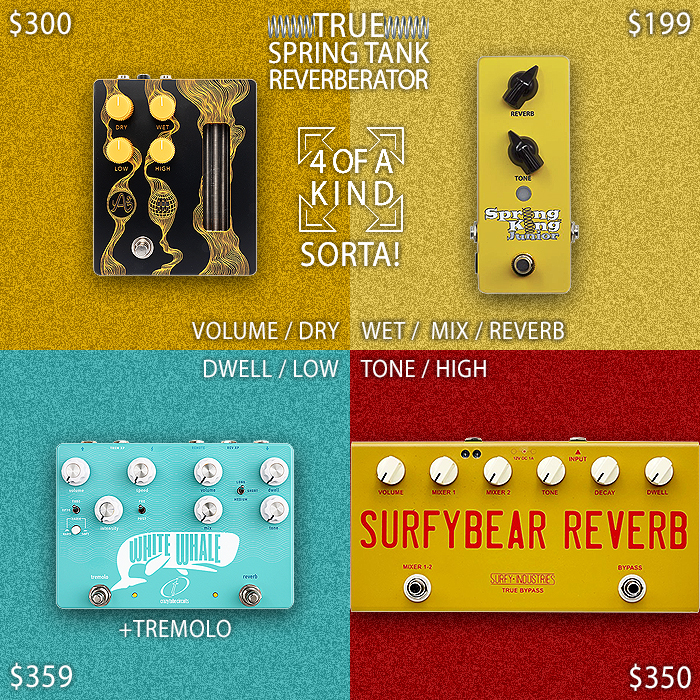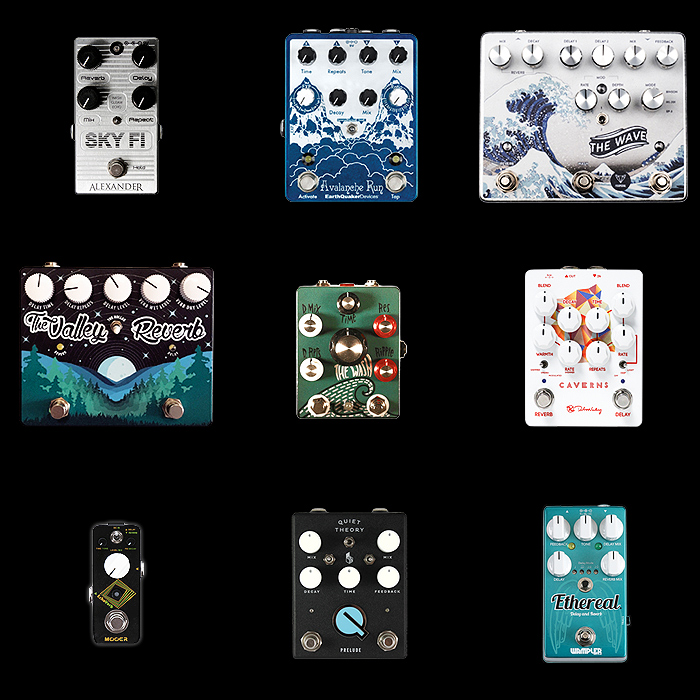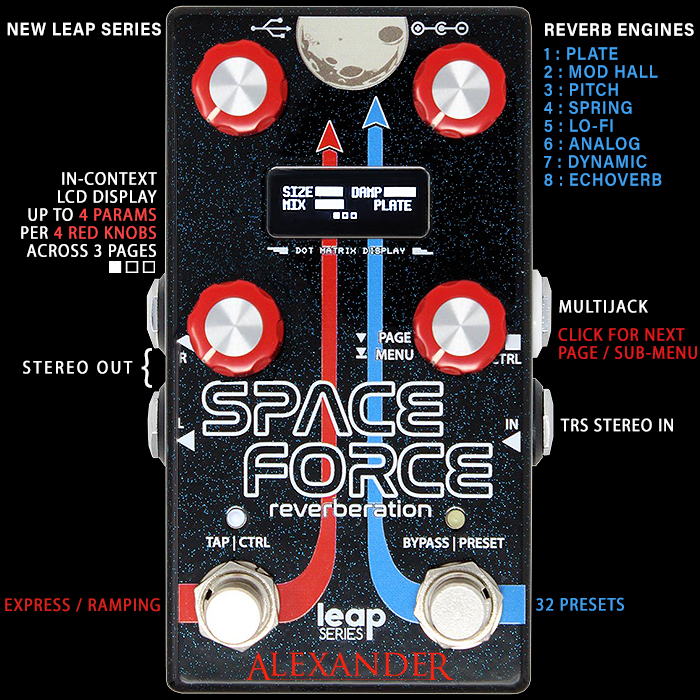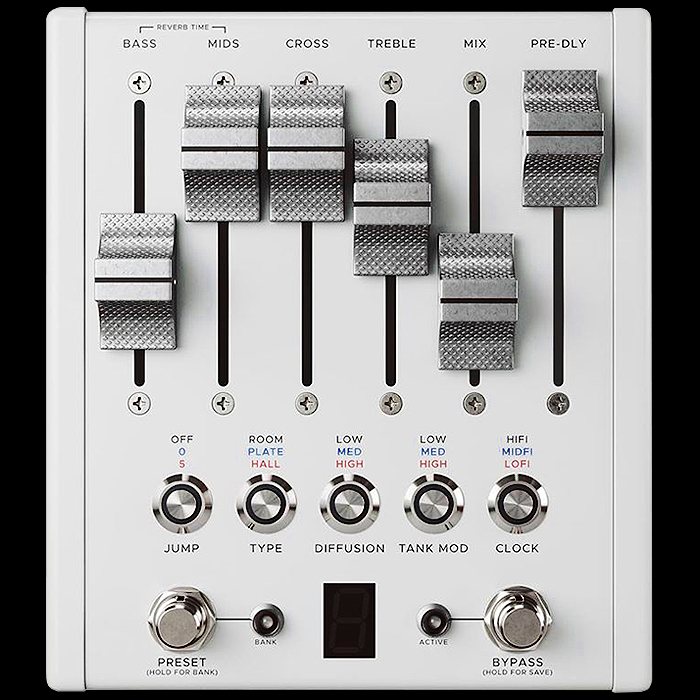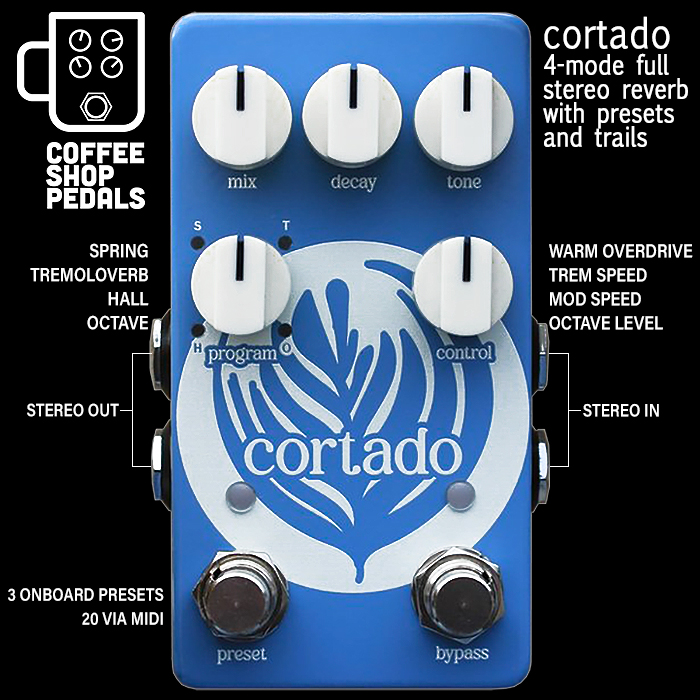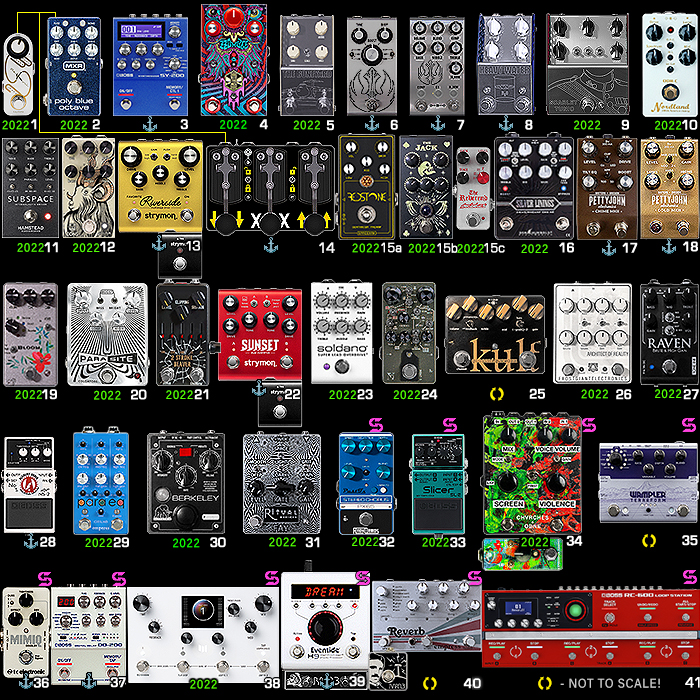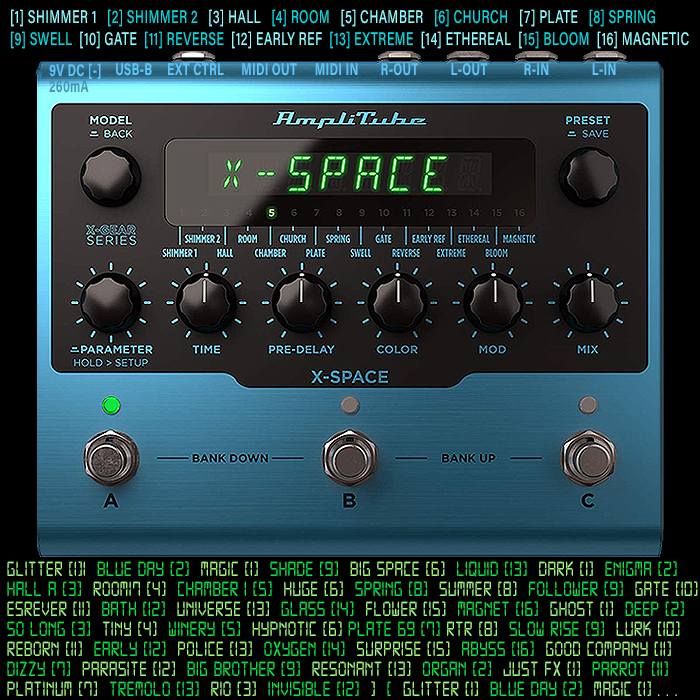Colortone's massively evolved Spring Reverb II delivers 3 Pristine Reverberation Modes, 2 styles of Modulation, and serious hidden smarts

I’m obviously a huge fan of AD Hauser’s Colortone Pedals - including their cool new Cog Series Knobs and Headliners - where this ’Spring Reverb II’ is something of a misnomer as it covers far more territory than its moniker would lead you to believe. The original Colortone Spring Reverb was a much simpler 3-knob Belton Brick affair (Blend, Decay, Tone), while the new one makes use of another of those glorious custom ElectroSmith chips - which delivers 3 richly detailed Reverberation Modes with 2 levels / layers of 4 controls, and 2 styles of Modulation.
I find I can control most of the pedal with my toes! apart from the 3-way Mode switch - which requires manual intervention. It would be nice to have some way of switching modes from a standing position for the next update. In fact I could probably foresee dual footswitches for switching / preset purposes.
While as is - operation could not be simpler - you select the mode, the degree of decay / length of tail, then Dry>Wet Blend, Tilt EQ and Vibrato Modulation Depth. Note that for the EchoVerb Mode - the Vibrato Modulation can overpower the soft echoes - so it’s suggested you dial the Mod back when using EchoVerb.
You assign the secondary controls via a long press on the footswitch - left LED then turns solid red, and you can adjust EchoVerb Delay Time (Decay2), ±4dB Boost (Blend2), and bring in the glorious RotoTrem via Speed (Tone2) and Depth (Mod2). The RotoTrem sounds fantastic for Stereo Output - while it’s actually one of the prettiest Tremolos you will hear in Mono also. In fact you can dial back the regular Blend and just use the pedal as a glorious sounding Tremolo if you wish - and while that’s really intended as a secondary Modulation voicing - it kinda counts as a 3-in-1 + 1!
Controls - Decay (Tail) / EchoVerb Delay Time, Blend (Dry>Wet) / ±4dB Boost, Tilt EQ Tone / RotoTrem Speed, Vibrato Mod Depth / RotoTrem Depth, Footswitch Short Press = On/Off, Footswitch Long Press = Secondary Params On/Off, Internal Stereo-Out Dip-switch, Micro USB Port on right-edge for Updates and Requests.

The 3 Modes are as follows :
- ECHOVERB - Based on the 90’s Princeton PT2399 Echo Chips with pronounced delayed reflections/echos
- STUDIO - Modern 90’s Rack Reverb - A Warm and Natural studio reverb
- TANK - 70’s Electromechanical Reverb Tank with bright, wet acoustic room reflections
I find myself mostly using the Studio Mode - that's the one that's the most versatile for me - and that has the greatest range really and interplay with the Modulations. The other two Modes are a little more specialist in how they interact with some of the controls / params - and are somewhat more sensitive to dial in.
Note also that when you switch Modes - the Blend in particular needs to be adjusted for optimal playback - occasionally the Tilt EQ too - this is something that will likely be smoothed-out in a future update release. (Via Micro USB port on the side).
All the dials have very even and predictable tapers and are really easy and quick to dial in - it all reacts exactly how you would expect it to.
The EchoVerb has those beautiful soft echoes - so remember to dial down the Modulation so as you don't inadvertently dampen the delay taps. And for the Spring Tank you genuinely get that metallic spring feel. The calibration of all three algorithms here is just perfect as these are properly pristine, reflective and immersive - especially so in Stereo but near enough as potent in Mono.
I would normally volunteer some of my own presets - while I feel the trio suggested by AD are the perfect kick-off point as below.
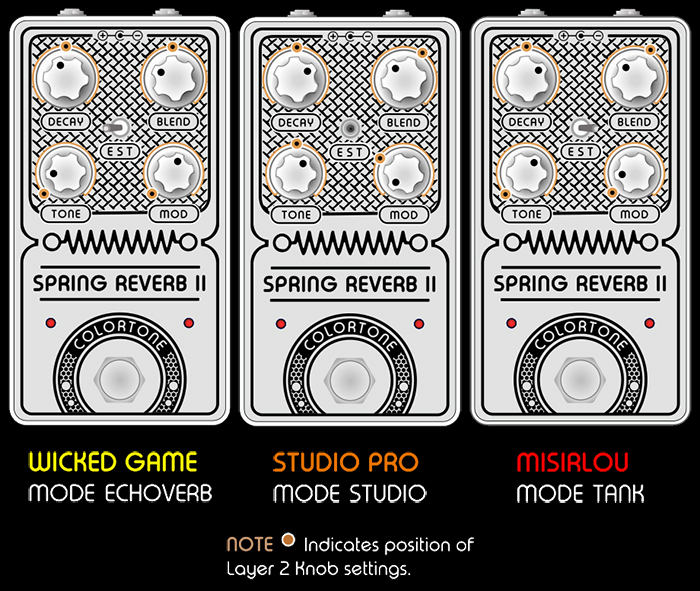
Each of the Modes really is quite distinctly different and delivers a different dynamic and immersive environment for playing within. For my own needs it would be preferable to have Stereo In and Out, as you can only use one Mono > Stereo pedal in your chain - and that slot is mostly taken up by my current favourite delay - the Boss DM-101.
So as I started saying in the beginning you can so cleverly dial things in and out that you have several different effects available to you here - including that gorgeous RotoTrem - which is almost worth the price of admission alone!
On these kinds of pedals you often see Spring, Plate and Hall Modes - where I think I much prefer the range of the trio offered here.
The Colortone Spring Reverb II is one of those Tardis pedals - whose overall function is far greater than the sum of its parts - it looks really simple at first glance and for sure can be operated simply if you wish - but it's using those hidden depths where a lot of the magic happens - a really clever 'Reverb' pedal for sure!
Available right now for $199 / £166 from the Colortone Pedals Webstore and at selected International Dealers - including Juno in the UK, and LEP International in Japan.
Demos
































